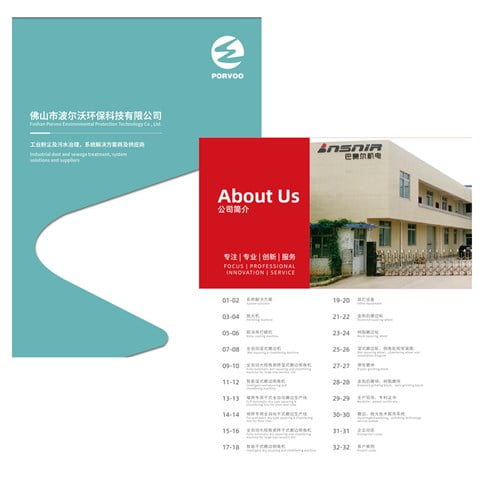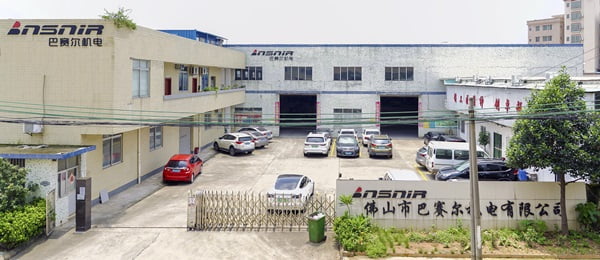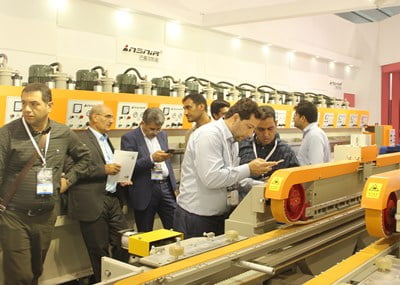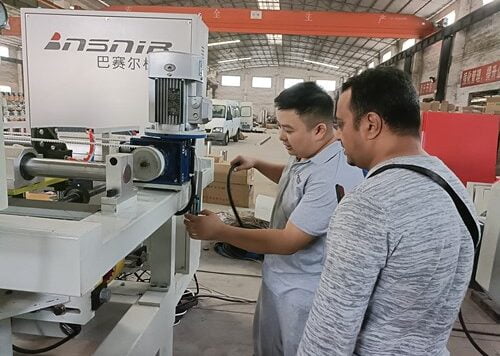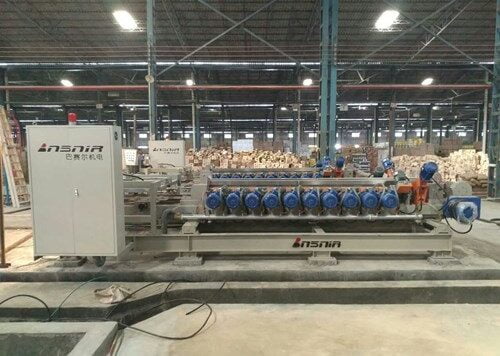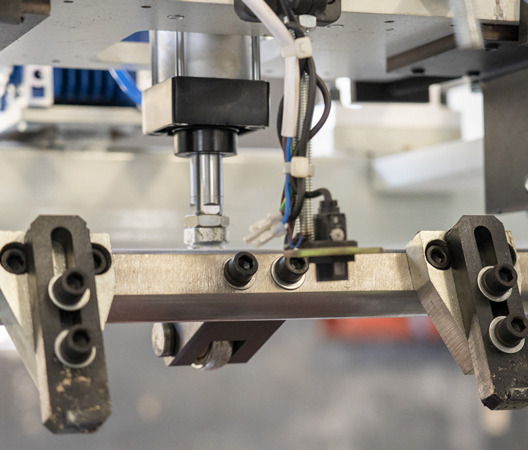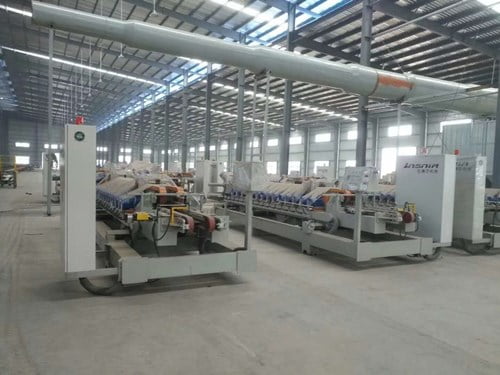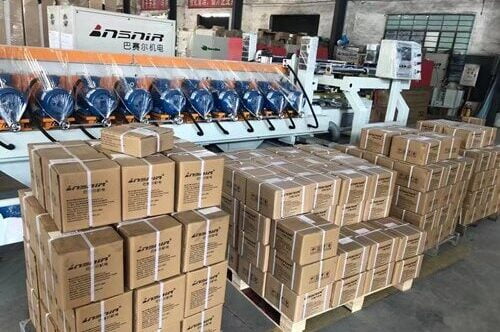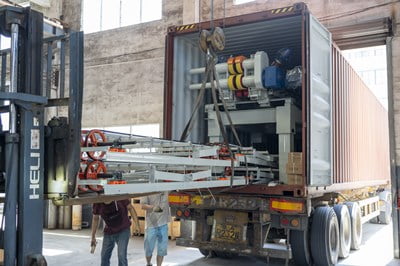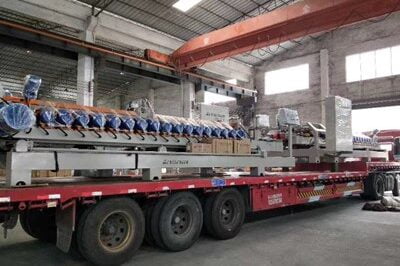The ceramic tile manufacturing industry faces mounting pressure to deliver consistently superior high-gloss systems that meet increasingly demanding aesthetic and performance standards. Production facilities worldwide struggle with achieving uniform surface quality across large-scale operations while maintaining cost-effectiveness and production speed.
Without proper polishing technology, manufacturers risk producing tiles with inconsistent gloss levels, surface defects, and reduced market competitiveness. Inferior surface finishing can result in customer complaints, returned shipments, and damaged brand reputation. These quality issues become magnified when dealing with premium tile segments where surface perfection is non-negotiable.
This comprehensive technical guide provides industry professionals with detailed insights into modern high-gloss ceramic tile polishing systems, covering everything from fundamental principles to advanced implementation strategies. We’ll explore proven methodologies, technical specifications, and practical solutions that leading manufacturers use to achieve consistently exceptional results.
What Are High-Gloss Ceramic Tile Polishing Systems?
High-gloss ceramic tile polishing systems represent sophisticated manufacturing solutions designed to achieve mirror-like surface finishes on ceramic and porcelain tiles. These systems integrate multiple polishing stages, precision control mechanisms, and advanced abrasive technologies to transform raw tile surfaces into highly reflective, aesthetically superior products.
Core System Components
Modern polishing systems incorporate several critical elements working in coordinated sequence. The primary components include gloss finishing stations equipped with diamond-embedded polishing heads, water circulation systems for cooling and debris removal, and computerized control units managing pressure, speed, and progression parameters.
BASAIR Tech pioneered many innovations in this field, developing integrated solutions that combine mechanical precision with intelligent automation. Their systems typically feature 8-12 polishing stations, each optimized for specific surface treatment phases.
Polishing Methodology Overview
The polishing process follows a systematic approach beginning with coarse abrasive treatment and progressing through increasingly fine grits. Initial stages remove surface irregularities and establish baseline smoothness, while final stages achieve the desired gloss level and optical clarity.
| Polishing Stage | Grit Size | Purpose | Typical Duration |
|---|---|---|---|
| Rough Grinding | 50-120 | Surface leveling | 45-60 seconds |
| Intermediate | 220-400 | Smoothing | 30-45 seconds |
| Fine Polishing | 800-1200 | Gloss development | 25-35 seconds |
| Final Finishing | 1500-3000 | Mirror finish | 20-30 seconds |
How Do Advanced Polishing Technologies Enhance Surface Quality?
Surface quality achievement depends heavily on the sophisticated interaction between abrasive materials, mechanical systems, and process control technologies. Advanced polishing technologies leverage multiple simultaneous processes to achieve consistent, high-quality results across diverse tile materials and surface geometries.
Diamond Abrasive Technology
Diamond-embedded polishing tools represent the industry standard for achieving superior surface quality in ceramic tile applications. These tools maintain consistent cutting performance throughout extended production runs while generating uniform surface textures essential for high-gloss finishes.
Recent developments in synthetic diamond technology have improved both cutting efficiency and surface finish quality. Manufacturers report 25-30% improvements in gloss uniformity when upgrading from traditional abrasives to premium diamond systems.
Pressure Control Systems
Precision pressure control ensures consistent material removal rates and surface finish quality across varying tile dimensions and material hardness levels. Modern systems employ pneumatic or hydraulic pressure regulation with real-time feedback mechanisms maintaining optimal contact pressure throughout the polishing sequence.
Water Management Integration
Effective water circulation systems serve multiple critical functions including temperature control, debris removal, and surface lubrication. Proper water management prevents thermal damage to tile surfaces while ensuring optimal polishing compound distribution and contaminant removal.
What Technical Specifications Define System Performance?
Understanding key technical specifications enables manufacturers to select appropriate equipment and optimize production parameters for specific applications. Performance characteristics vary significantly based on system design, component quality, and integration sophistication.
Production Capacity Metrics
Line speed capabilities typically range from 15-60 meters per minute depending on tile dimensions, material hardness, and desired finish quality. Premium systems achieve higher throughput while maintaining consistent surface quality through advanced automation and process optimization.
Production capacity calculations must account for multiple variables including tile size, material type, and quality requirements. A typical high-capacity system processes 800-1200 square meters per hour for standard residential tiles.
Gloss Level Achievement
Gloss measurement follows standardized protocols using 60-degree measurement angles. Professional-grade systems consistently achieve gloss levels exceeding 85 units, with premium installations reaching 95+ units for mirror-finish applications.
| Gloss Level | Measurement Range | Application Category |
|---|---|---|
| Semi-Gloss | 30-60 units | Commercial flooring |
| High-Gloss | 60-85 units | Residential premium |
| Mirror-Finish | 85-95+ units | Luxury applications |
Power Consumption Analysis
Energy efficiency considerations become increasingly important as manufacturers seek to reduce operational costs. Modern systems consume 15-25 kW per polishing station, with total line consumption ranging from 120-300 kW depending on configuration and capacity.
Which Polishing Technology Innovations Drive Industry Standards?
Contemporary polishing technology continues evolving through integration of automation, artificial intelligence, and advanced materials science. Leading manufacturers invest heavily in research and development to maintain competitive advantages in surface finishing capabilities.
Automated Quality Control Integration
Real-time surface quality monitoring systems use advanced optical sensors and artificial intelligence algorithms to detect surface defects and adjust polishing parameters automatically. These systems reduce waste and improve consistency while minimizing manual intervention requirements.
Implementation of automated quality control typically results in 15-20% reduction in defect rates and improved overall equipment effectiveness (OEE) scores reaching 85-90% for well-maintained systems.
Variable Speed Control Technology
Sophisticated variable speed control enables optimization of polishing parameters for different tile materials and surface requirements. This technology allows manufacturers to process diverse product lines efficiently while maintaining consistent quality standards.
Predictive Maintenance Systems
Advanced monitoring systems track equipment performance parameters and predict maintenance requirements before failures occur. This approach reduces unplanned downtime and extends equipment lifespan while maintaining optimal performance characteristics.
How to Optimize Production Line Integration?
Successful integration of high-gloss polishing systems requires careful consideration of upstream and downstream processes, material handling systems, and quality control protocols. Optimization strategies focus on maximizing throughput while maintaining consistent surface quality and minimizing operational costs.
Material Flow Coordination
Effective material handling systems ensure smooth tile progression through multiple polishing stages while preventing surface damage or contamination. Conveyor systems must accommodate varying tile dimensions and maintain precise positioning throughout the polishing sequence.
Advanced line polishing machines incorporate sophisticated material handling capabilities designed to optimize production flow while protecting tile surfaces from damage.
Process Parameter Optimization
Systematic optimization of polishing parameters including pressure, speed, and abrasive selection enables manufacturers to achieve optimal results for specific tile materials and surface requirements. This process requires extensive testing and documentation to establish reliable operating procedures.
Quality Assurance Protocols
Comprehensive quality assurance programs incorporate multiple inspection points throughout the polishing process, ensuring consistent surface quality and identifying potential issues before they impact production efficiency or product quality.
What Are the Key Implementation Considerations?
Successful implementation of high-gloss polishing systems requires thorough planning, skilled technical support, and ongoing optimization efforts. Manufacturers must consider multiple factors including facility requirements, operator training, and maintenance protocols.
Facility Infrastructure Requirements
High-gloss polishing systems require robust facility infrastructure including adequate electrical power, water supply and drainage systems, and proper ventilation for dust and moisture control. Foundation requirements depend on system size and vibration characteristics.
Operator Training Programs
Comprehensive operator training ensures optimal system performance and extends equipment lifespan. Training programs should cover system operation, maintenance procedures, troubleshooting techniques, and safety protocols.
Maintenance Strategy Development
Preventive maintenance programs are essential for maintaining consistent performance and extending equipment lifespan. Maintenance schedules should address both routine tasks and major overhauls based on manufacturer recommendations and operational experience.
However, maintenance complexity can be significant, requiring specialized knowledge and replacement parts that may involve substantial costs and extended downtime if not properly planned.
How Do Cost-Benefit Analyses Support Investment Decisions?
Investment in high-gloss polishing systems requires careful financial analysis considering initial capital costs, operational expenses, and expected returns through improved product quality and market positioning. Comprehensive cost-benefit analyses help manufacturers make informed decisions about system selection and implementation timing.
Initial Investment Analysis
Capital costs for complete high-gloss polishing systems typically range from $200,000 to $800,000 depending on capacity, features, and automation level. Additional costs include installation, training, and facility modifications necessary for proper system integration.
Operational Cost Considerations
Ongoing operational costs include energy consumption, abrasive materials, maintenance supplies, and labor requirements. Energy costs typically represent 20-30% of total operational expenses, while abrasive materials account for 25-35% of ongoing costs.
Return on Investment Calculations
Manufacturers typically achieve return on investment within 18-36 months through improved product quality, reduced waste, and enhanced market positioning. Premium surface finishes often command 15-25% price premiums in competitive markets.
| Cost Category | Annual Amount | Percentage of Total |
|---|---|---|
| Energy | $45,000-65,000 | 25-30% |
| Abrasives | $55,000-75,000 | 30-35% |
| Maintenance | $25,000-35,000 | 15-20% |
| Labor | $40,000-60,000 | 20-25% |
High-gloss ceramic tile polishing systems represent essential technology for manufacturers seeking to compete in premium market segments. Success depends on careful system selection, proper implementation, and ongoing optimization efforts supported by comprehensive training and maintenance programs.
The technology continues evolving toward greater automation, improved energy efficiency, and enhanced surface quality capabilities. Manufacturers who invest in modern ceramic tile polishing equipment position themselves advantageously for future market opportunities while meeting increasingly demanding customer expectations.
Looking ahead, integration of artificial intelligence, advanced materials science, and sustainable manufacturing practices will likely drive the next generation of polishing technology innovations. What specific surface quality challenges does your facility face that might benefit from advanced polishing system capabilities?
Frequently Asked Questions
Q: What are High-Gloss Ceramic Tile Polishing Systems: Technical Guide basics?
A: High-Gloss Ceramic Tile Polishing Systems: Technical Guide covers the step-by-step process used to achieve a mirror-like, reflective finish on ceramic tiles. It typically involves multiple polishing stages: initial grinding to shape the tile surface, intermediate smoothing to remove scratches, fine polishing for surface densification, and final finishing for maximum gloss. Each stage uses progressively finer abrasives and carefully controlled equipment settings to ensure a flawless shine without damaging the tile. This technical guide equips manufacturers and professionals with the methods to get superior surface quality and durability.
Q: Why is surface preparation important in High-Gloss Ceramic Tile Polishing Systems?
A: Surface preparation is crucial because it ensures the polishing compounds and abrasives work efficiently. It involves thoroughly cleaning tiles to remove dirt, dust, or debris, which could interfere with polishing. In cases of heavily scratched or stained tiles, sanding or grinding is done to remove the damaged top layer and provide a smooth base. Proper preparation prevents surface defects and helps achieve an even, glossy finish, which is the hallmark of high-gloss ceramic tile polishing.
Q: What equipment and abrasives are typically used in High-Gloss Ceramic Tile Polishing Systems?
A: The process uses industrial diamond wheels and polishing pads with abrasives of increasing fineness:
- Initial grinding: 80-120 microns removal using coarse diamond wheels at high RPM.
- Intermediate smoothing: 600-1200 grit abrasives to remove fine scratches.
- Fine polishing: 1500-2500 grit abrasives for surface densification.
- Final finishing: Ultra-fine 3000+ grit abrasives for a mirror-like gloss.
These stages require precise control of speed, pressure, and coolant flow to avoid thermal damage and achieve consistent results.
Q: How does the final finishing stage contribute to the quality in High-Gloss Ceramic Tile Polishing Systems?
A: The final finishing stage is essential for achieving the characteristic mirror-like finish of high-gloss ceramic tiles. It uses ultra-fine abrasives with minimal contact pressure to polish the surface without removing material, enhancing depth and clarity. Advanced polishing systems often incorporate automated surface inspection to verify gloss levels and detect microscopic defects, ensuring the polished tiles meet strict quality standards.
Q: Can High-Gloss Ceramic Tile Polishing Systems prevent stains and scratches?
A: While the polishing process improves the surface smoothness and gloss, protecting tiles from stains and scratches usually requires applying sealants after polishing. Sealants fill tile pores, creating a waterproof barrier and enhancing durability. For some tiles, chemical crystallization can also be used to boost natural shine and protect the surface. Combining high-gloss polishing with proper sealing significantly extends the tile’s lifespan and maintains its pristine look.
Q: How should polished ceramic tiles be maintained after using High-Gloss Ceramic Tile Polishing Systems?
A: Maintenance involves gentle cleaning and regular care to preserve the shine:
- Sweep or dust-dry clean frequently to prevent dirt buildup.
- Use mild soap with warm water and soft cloths for washing—avoid abrasive cleaners.
- Rinse thoroughly to remove any detergent residues.
- Dry tiles completely with a clean cloth to prevent water spots.
Following a consistent maintenance routine ensures the high-gloss finish stays vibrant and free from damage over time.
”’
External Resources
- Understanding the Ceramic Tile Polishing Process – Basair – Detailed technical guide examining the stages and parameters of ceramic tile polishing, including how high-gloss finishes are achieved in industrial settings.
- The Complete Guide to Ceramic Tile Line Polishing Machines – Basair – Comprehensive technical manual on automated systems for achieving high-gloss, flawless surface finishes in ceramic tile production lines.
- Technical Manual for Polishing and Treatment – Sigma Diamant (linked within Basair content) – Specialized technical material covering advanced polishing and surface treatment methods for ceramic tiles.
- The Ultimate Guide to Ceramic Tiles – LiLi Tile – Overview of ceramic tile production, including glazing and finishing processes that contribute to high-gloss surfaces.
- Tile Care & Maintenance Guide – Daltile (PDF) – Technical documentation on care and maintenance for polished and high-gloss ceramic and porcelain tiles.
- Tile Care and Maintenance | Marazzi USA – Guidance on maintenance for high-gloss ceramic tiles, with tips for preserving shine and technical advice for cleaning procedures.
”’

